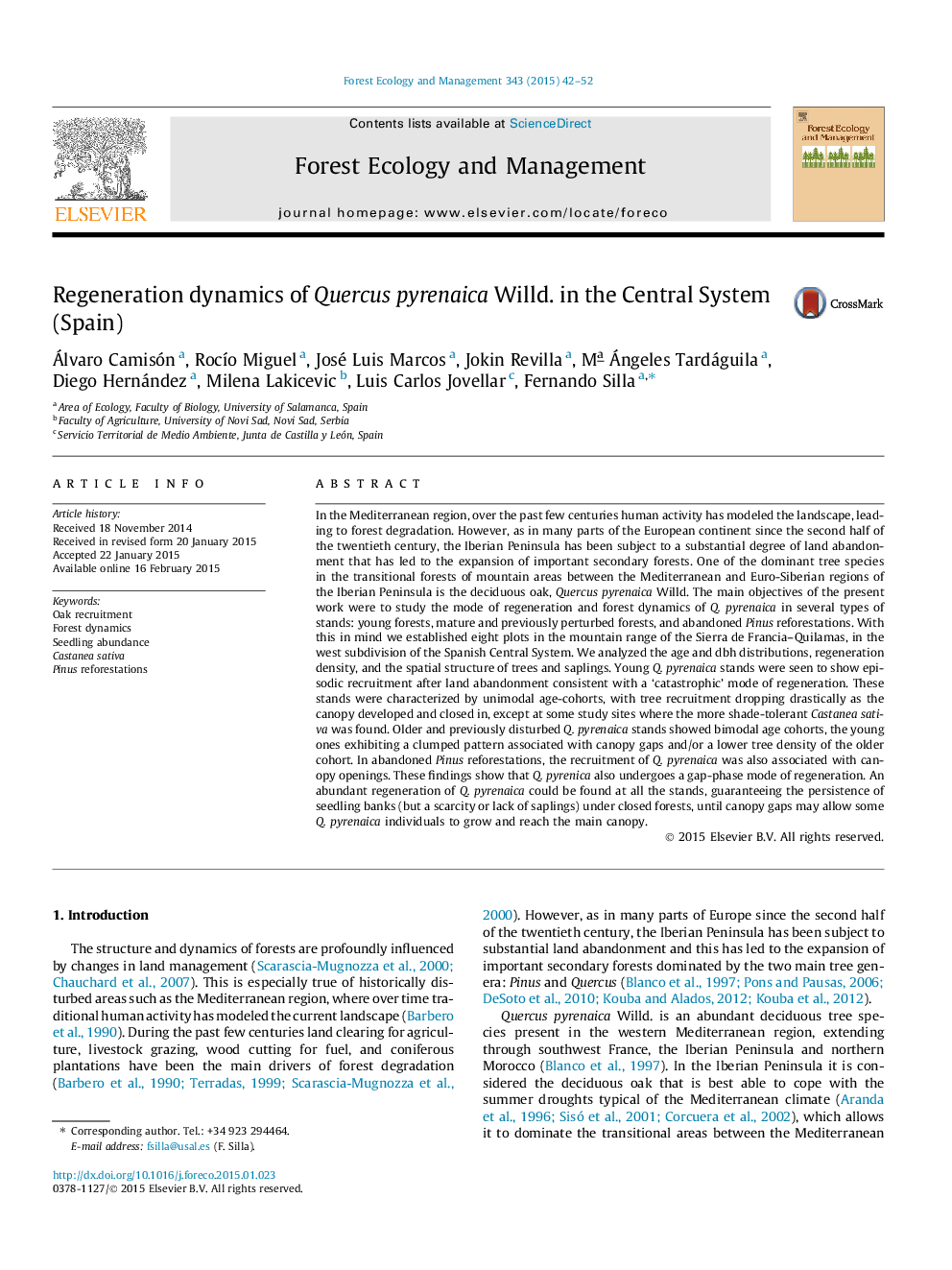| کد مقاله | کد نشریه | سال انتشار | مقاله انگلیسی | نسخه تمام متن |
|---|---|---|---|---|
| 86285 | 159176 | 2015 | 11 صفحه PDF | دانلود رایگان |

• Dynamics of Quercus pyrenaica dominated forests were studied in the Central System.
• Q. pyrenaica age cohorts were consistent with a ‘catastrophic’ regeneration mode.
• Recruitment of Q. pyrenaica was associated with forest canopy openings.
• Q. pyrenaica abundant sprouting can allow self-replacement after stem death.
• Castanea sativa recruited in low numbers in dominated Q. pyrenaica forests.
In the Mediterranean region, over the past few centuries human activity has modeled the landscape, leading to forest degradation. However, as in many parts of the European continent since the second half of the twentieth century, the Iberian Peninsula has been subject to a substantial degree of land abandonment that has led to the expansion of important secondary forests. One of the dominant tree species in the transitional forests of mountain areas between the Mediterranean and Euro-Siberian regions of the Iberian Peninsula is the deciduous oak, Quercus pyrenaica Willd. The main objectives of the present work were to study the mode of regeneration and forest dynamics of Q. pyrenaica in several types of stands: young forests, mature and previously perturbed forests, and abandoned Pinus reforestations. With this in mind we established eight plots in the mountain range of the Sierra de Francia–Quilamas, in the west subdivision of the Spanish Central System. We analyzed the age and dbh distributions, regeneration density, and the spatial structure of trees and saplings. Young Q. pyrenaica stands were seen to show episodic recruitment after land abandonment consistent with a ‘catastrophic’ mode of regeneration. These stands were characterized by unimodal age-cohorts, with tree recruitment dropping drastically as the canopy developed and closed in, except at some study sites where the more shade-tolerant Castanea sativa was found. Older and previously disturbed Q. pyrenaica stands showed bimodal age cohorts, the young ones exhibiting a clumped pattern associated with canopy gaps and/or a lower tree density of the older cohort. In abandoned Pinus reforestations, the recruitment of Q. pyrenaica was also associated with canopy openings. These findings show that Q. pyrenica also undergoes a gap-phase mode of regeneration. An abundant regeneration of Q. pyrenaica could be found at all the stands, guaranteeing the persistence of seedling banks (but a scarcity or lack of saplings) under closed forests, until canopy gaps may allow some Q. pyrenaica individuals to grow and reach the main canopy.
Journal: Forest Ecology and Management - Volume 343, 1 May 2015, Pages 42–52